Themed collection Mechanistic Studies in Catalysis

Mechanistic studies in catalysis
Editorial for the themed issue “Mechanistic studies in catalysis”.

Catal. Sci. Technol., 2014,4, 3408-3408
https://doi.org/10.1039/C4CY90040E
Distinguishing homogeneous from nanoparticle asymmetric iron catalysis
Overview statement: we highlight the use of multiple techniques to differentiate homogeneous from nanoparticle catalysis as it pertains to systems developed in our group.
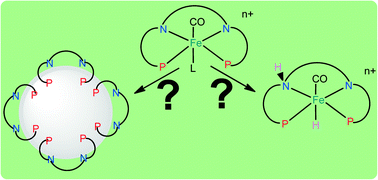
Catal. Sci. Technol., 2014,4, 3426-3438
https://doi.org/10.1039/C4CY00468J
Differential selectivity measurements and competitive reaction methods as effective means for mechanistic studies of complex catalytic reactions
This Perspective gives an overview of the basic principles and practices of mechanistic studies based on differential selectivity measurements.
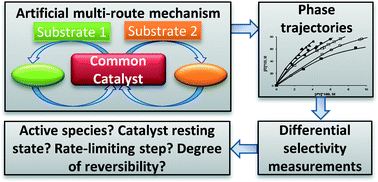
Catal. Sci. Technol., 2014,4, 3439-3457
https://doi.org/10.1039/C4CY00479E
Rhodium diphosphine complexes: a case study for catalyst activation and deactivation
The present work provides an overview of possible activation and deactivation phenomena in homogeneous catalytic processes promoted by different types of rhodium complexes containing diphosphine ligands.

Catal. Sci. Technol., 2014,4, 3409-3425
https://doi.org/10.1039/C4CY00497C
Observation of guanidine–carbon dioxide complexation in solution and its role in the reaction of carbon dioxide and propargylamines
The first observation of guanidine–CO2 ‘activation’ complexes in solution and their implications on the catalytic activity of guanidines are reported.

Catal. Sci. Technol., 2014,4, 3458-3462
https://doi.org/10.1039/C4CY00480A
Isotopic probes for ruthenium-catalyzed olefin metathesis
13C-labelled Grubbs catalysts, RuCl2(L)(PCy3)(![[double bond, length as m-dash]](https://www.rsc.org/images/entities/char_e001.gif) 13CHR) (R = H, Ph), pinpoint the fate of the methylidene (benzylidene) moiety during metathesis and deactivation.
13CHR) (R = H, Ph), pinpoint the fate of the methylidene (benzylidene) moiety during metathesis and deactivation.
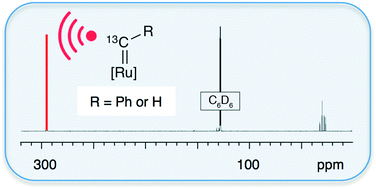
Catal. Sci. Technol., 2014,4, 4210-4218
https://doi.org/10.1039/C4CY01118J
Mechanistic examination of AuIII-mediated 1,5-enyne cycloisomerization by AuBr2(N-imidate)(NHC)/AgX precatalysts – is the active catalyst AuIII or AuI?
The role of AuI and AuIII species in 1,5-enyne cycloisomerization reactions has been examined in this paper.

Catal. Sci. Technol., 2014,4, 3524-3533
https://doi.org/10.1039/C4CY00617H
Structure sensitivity in the ruthenium nanoparticle catalyzed aqueous-phase Fischer–Tropsch reaction
Low-temperature Fischer–Tropsch reaction data are reported for Ru nanoparticles suspended in the water phase.

Catal. Sci. Technol., 2014,4, 3510-3523
https://doi.org/10.1039/C4CY00709C
Hyperpolarisation through reversible interactions with parahydrogen
Ir(COD)(NHC)Cl complexes provide significant insight into the catalytic processes underpinning SABRE hyperpolarization.

Catal. Sci. Technol., 2014,4, 3544-3554
https://doi.org/10.1039/C4CY00464G
The role of reversibility in the enantioselective conjugate addition of α,α-disubstituted aldehydes to nitro-olefins catalyzed by primary amine thioureas
Identification of intermediates in the asymmetric conjugate addition of aldehdyes to nitro-olefins catalyzed by primary amine thioureas add mechanistic insight.

Catal. Sci. Technol., 2014,4, 3505-3509
https://doi.org/10.1039/C4CY00648H
Discrimination of the mechanism of CH4 formation in Fischer–Tropsch synthesis on Co catalysts: a combined approach of DFT, kinetic isotope effects and kinetic analysis
The mechanism of CH4 formation during Fischer–Tropsch synthesis on cobalt has been studied.

Catal. Sci. Technol., 2014,4, 3534-3543
https://doi.org/10.1039/C4CY00566J
Exploring the mechanism of the hydroboration of alkenes by amine–boranes catalysed by [Rh(xantphos)]+
The [Rh(xantphos)]+ fragment acts as an effective catalyst for the hydroboration of the alkene TBE (tert-butyl ethene) using the amine–borane H3B·NMe3 at low (0.5 mol%) catalyst loadings to give the linear product.
![Graphical abstract: Exploring the mechanism of the hydroboration of alkenes by amine–boranes catalysed by [Rh(xantphos)]+](/is/Image/Get?imageInfo.ImageType=GA&imageInfo.ImageIdentifier.ManuscriptID=C4CY00597J&imageInfo.ImageIdentifier.Year=2014)
Catal. Sci. Technol., 2014,4, 3486-3494
https://doi.org/10.1039/C4CY00597J
Mechanism of CO2 hydrogenation to formates by homogeneous Ru-PNP pincer catalyst: from a theoretical description to performance optimization
CO2 hydrogenation activity of Ru-PNP can be enhanced by controlling the rate-determining step within the main catalytic cycle I.

Catal. Sci. Technol., 2014,4, 3474-3485
https://doi.org/10.1039/C4CY00568F
Gas-phase oxidation of ethanol over Au/TiO2 catalysts to probe metal–support interactions
Ethanol and oxygen were converted over titania and gold nanoparticles supported on titania to investigate the reactivity of the support, the influence of the metal, and the role of metal–support interactions.
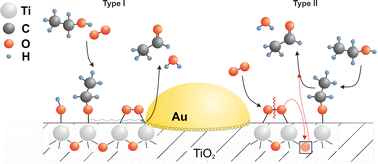
Catal. Sci. Technol., 2014,4, 3495-3504
https://doi.org/10.1039/C4CY00493K
A transient in situ infrared spectroscopy study on methane oxidation over supported Pt catalysts
Catalysts with platinum dispersed on alumina, ceria and mixed alumina–ceria have been prepared by incipient wetness impregnation, characterized with transmission electron microscopy and X-ray diffraction, and evaluated for total oxidation of methane under both stationary and transient gas compositions (oxygen pulsing).
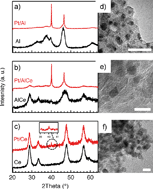
Catal. Sci. Technol., 2014,4, 3463-3473
https://doi.org/10.1039/C4CY00486H
About this collection
We are delighted to present our Catalysis Science & Technology themed issue focusing on Mechanistic Studies in Catalysis . Encompassing novel and diverse research in both homogeneous and heterogeneous catalysis, this special collection is guest edited by Professors John Brown (University of Oxford), Andreas Pfaltz (University of Basel), and Rutger van Santen (Eindhoven University of Technology).